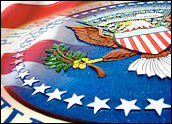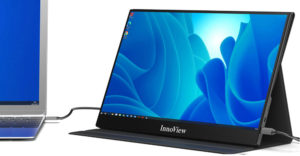
Part 1 of this two-part series looks at the current state of the vote-tallying system and calls for its reform in the wake of vote-counting irregularities in the last two presidential elections. Part 2 explores whether open source software in electronic voting machines is the solution.
Even as the presidential elections draw ever nearer, debate rages about the technologies used to enable the voting process.
It’s too late for any large systematic changes to be implemented for this year, Matthew Zimmerman, senior staff attorney with the Electronic Frontier Foundation, told LinuxInsider. However, what should we use down the road?
Voter-Verifiable Trail
“Security is only as good as its weakest link,” David Dill, professor of computer science at Stanford University and founder of the Verified Voting Foundation, told LinuxInsider. “There is no way you can take an all-electronic machine and make sure it’s all trustworthy.”
What’s needed, Dill said, is a voter-verifiable audit trail — “an indelible record where the voter can make sure it’s correct and where it’s available for a manual count,” if necessary.
“Having a paper element — in particular, a paper record that the voter has verified him- or herself — is the most important safeguard right now, along with a trail for post-election audits,” Ed Felten, professor of computer science and public affairs and director of the center for information technology policy at Princeton University, agreed.
Scanning Ballot Box
One idea that has been tried out is attaching a printer to each machine so that a ballot could be printed out and deposited into the ballot box in paper form, Dill noted, but “printers are expensive, and they break often. That idea hasn’t been very popular.”
What Dill’s group recommends now is a system in which voters fill out a paper ballot themselves, and then put it into a scanner, which is also the ballot box, he said. The scanner then counts and records the ballot, or it may “kick it back” if it’s mismarked, he explained, giving the voter a chance to fix it.
Disability Advocates
Paper may be cumbersome, but it also has opponents for other reasons.
Specifically, disability advocates frequently speak out against the use of paper in the voting process because of the difficulty visually or mobility-impaired people might have in using it, Zimmerman noted.
“[In the] big picture, I think the way this is going is toward the use of more hybrid systems,” he predicted — “technologies that have most of the benefits of electronic systems, like touchscreens, but that instead of saving the votes electronically and relying on reconstitution, instead make the system print out a scannable paper ballot.”
Ballot-Marking Technology
One example of such a technology is the AutoMark, which voters can use to mark ballots, he noted. “The approach is a good one, and it has already been used in general elections.”
More widespread implementation, however, may take some time. “Many jurisdictions are still trying to decide what to do,” he noted. “People don’t want to be stuck yet again purchasing equipment they may have to replace down the road.”
Open Source Advantages
Making votes verifiable and auditable is one goal, but a higher-level issue is whether any voting technology should be allowed to be proprietary. In the wake of Felten’s findings, renewed calls have been sounded for an open source voting system.
“The voter has no way under the current system to know their vote really counted as it was cast,” Alan Dechert, president of the Open Voting Consortium, told LinuxInsider. “In an open source system with correct procedures in place, it becomes a real possibility.”
The Open Voting Consortium believes that all aspects of an election need to be open to public scrutiny — something a paper trail alone can’t provide.
Awaiting Certification
“Just because there’s a paper trail, that doesn’t mean things can’t go wrong in a way that’s unobserved,” Dechert explained. “We want everything open to public scrutiny. There’s no excuse for any secrets in the voting system — except your ballot.”
Dechert’s group has designed an open source system, though much still needs to be done to make it robust and get it certified, he concedes.
As designed, however, the Ubuntu-based system is also voter-verifiable because the public can review in advance the screens they’ll see on Election Day, presented as pre-rendered picture files.
The group hopes the system will be used at least on a small scale in California’s 2008 elections.
Two Kinds of Openness
“There are really two kinds of openness,” Felten told LinuxInsider.
“One is whether the public is allowed to see the source code and understand the design of the technology — I’m in favor of that,” he said.
The other aspect is the ability for people to modify the software. “I think there are advantages to that, but it’s less critical from an election integrity point of view,” he said. “Certainly if we had open source in terms of knowing what the code is, that would be an important step.”
‘Doesn’t Solve the Problem’
Not everyone is convinced open source would be a cure-all, however.
“I feel it’s necessary to point out that it doesn’t solve the problem,” Dill asserted. “Open source can still be buggy and malicious, and it’s also still very hard to know that that software is what the machine is actually running.”
Dill may not think it solves the problem, but he does still think an open source solution would be desirable.
“I think it would be great if someone came forward with a high-quality open source voting machine — if those who make them thought carefully, they would realize it wouldn’t hurt their business,” he explained. “I’m waiting for one of the companies to come forward with that idea.”
Most likely, the company would need to develop new software and release it in draft form, inviting people to help find the holes. The company could then make revisions and spend the time necessary to make sure it’s solid before it gets released, thereby increasing public trust, he said.
The Virtues of Paper
Looking forward, the old-fashioned approach may still be the best one.
“I think at this stage the paper-based approach is the most reliable one we have,” Zimmerman said. “We’re certainly supportive of ideas to make the technology more transparent, but at this point the current generation of technology just hasn’t proven reliable and trustworthy enough.”
Zimmerman draws the line on how votes are stored and tabulated. “If it’s based off of an electrical signal stored in a machine, that’s different from a ballot that is scanned,” he explained. “Once you take that paper away, you get into dangerous territory.”
No More Delays
Though any changes may be too late for 2008, they shouldn’t be delayed by the approach of another election, Zimmerman added.
“We’ve been working on the issue for years now, and the answer is always that we shouldn’t make changes just before an election,” he said. “In the meantime, we’re using the electorate as guinea pigs.
“Why should we have to wait, when we know there are these inherent structural flaws in the system?” he concluded. “Do we really have to wait for another Florida 2000 before we fix it?”




















































